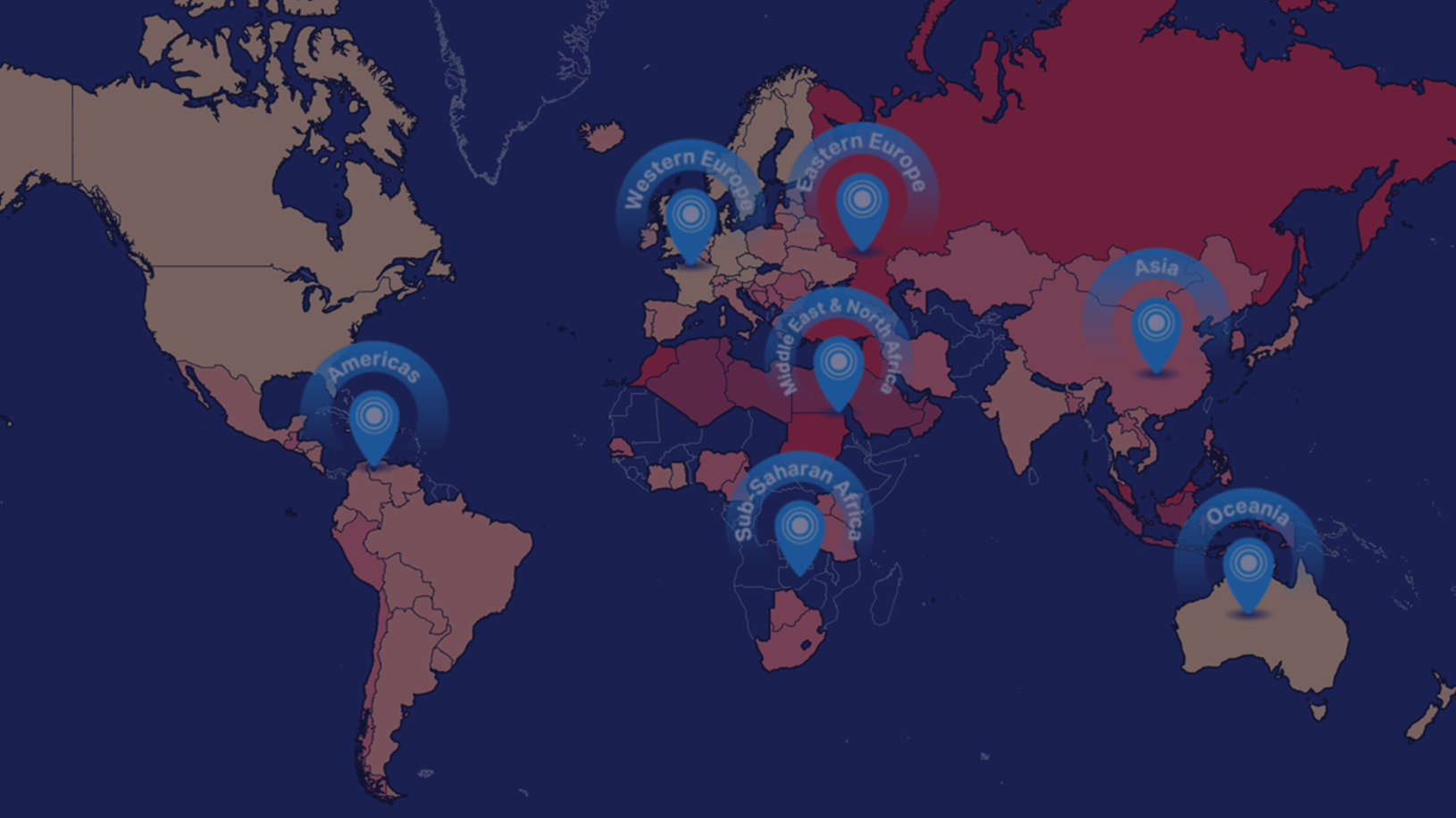
Antisemitism Around the World: Global 100
Related Content

GRADE LEVEL: High School
COMMON CORE STANDARDS: Reading, Speaking and Listening
Antisemitism Around the World
The ADL Global 100: Index of Antisemitism® is the most extensive poll on antisemitic attitudes and opinions toward Jewish people ever conducted. It consists of surveys of the general public in over 100 countries and territories gauging levels of antisemitic attitudes and adherence to traditional antisemitic stereotypes.
First conducted in 2014, ADL’s Global 100 found that antisemitic attitudes are persistent and pervasive around the world. More than one in four adults, 26% of those surveyed, held antisemitic attitudes. This figure represented an estimated 1.09 billion people around the world. In 2024, that number has nearly doubled to 46% of the world's population harbor antisemitic attitudes.
About Global 100
The Index is wide-ranging, and was conducted in 96 languages and dialects in countries with significant Jewish populations, in countries which once had Jewish populations, and in countries which never had significant Jewish populations. The findings allow us to not only better understand the magnitude of antisemitism around the world, but to assess where it is most problematic, how pervasive it is in certain regions, and exactly which anti-Jewish beliefs are the most seriously entrenched.
Follow up surveys conducted in 2015, 2019, 2023 and 2024.
About the Lesson Plan
This lesson provides an opportunity for high school students to understand more about antisemitic attitudes and stereotypes by people around the world, explore the ADL Global 100 and consider what can be done about antisemitic attitudes.
Learning Objectives:
- Students will understand some aspects of antisemitism, reflecting on examples and analyzing how it manifests itself through stereotyping, prejudice and discrimination.
- Students will explore the ADL Global 100 in order to learn more about antisemitic attitudes around the world, comparing and contrasting countries, regions and demographic information.
- Students will consider what people can do about antisemitism, especially in countries or regions with a high antisemitism index level.










